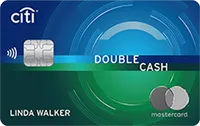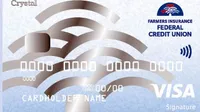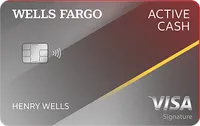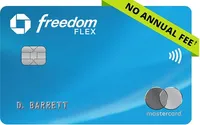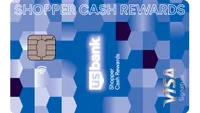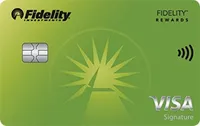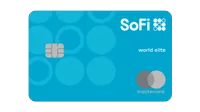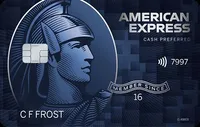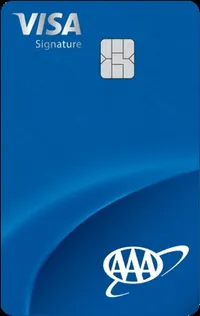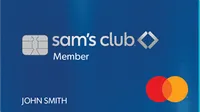Best Cash Back Credit Cards of 2025
If you're searching for a credit card that rewards you for everyday purchases, we've chosen the best.

- Flat-Rate Cash Back
- Rotating Categories
- Best for Savers
- Groceries Rewards
- Gas & EV Rewards
- How Does a Cash Back Card Work?
- Pros and Cons
- Who Should Use Cash Back Cards?
- Best Card for You
- How to Pick the Best Cash Back Card
- Can You Earn Cash Back Rewards With Bad Credit?
- Cash Back vs. Travel Credit Card
We may earn compensation when a customer clicks on a link, when an application is approved, or when an account is opened. We may not cover every available offer. Our relationship with advertisers may impact how an offer is presented on our site but our editorial selection of products is made independently. Terms apply to American Express benefits and offers. Enrollment may be required for select American Express benefits and offers. Visit americanexpress.com to learn more. We calculate a typical annual reward for each card, assuming $36,000 spent annually and less any annual fee. Interest rates, fees, rewards and other terms listed in this article are subject to change. Before you apply for a credit card, check its current terms and conditions with the issuer.
Are you eying cash back credit cards to counter inflation? You're not alone. Most people comparing rewards credit cards opt for those that provide cold, hard cash over points and miles.
To help you search, we have compiled a list of great cards that provide cash back on every purchase (or reward you with points that you can easily trade for cash at a strong value).
Know what kind of cash back card you want? Jump to these sections to see our top three picks in each category. Also, we listed credit cards in alphabetical order for each category.
Interest rates, fees, rewards and other terms listed in this article are subject to change. Before you apply for a credit card, check its current terms and conditions with the issuer.
Best Flat-Rate Cash Back Cards
Citi Double Cash® Credit Card
Sign-up bonus: $200 back if you spend $1,500 in the first six months.
Cardholders earn 1% cash back when they make a purchase and another 1% cash back when they pay the bill, for a total 2% back on all spending. Plus, earn 5% back on certain bookings that you make through the Citi Travel online portal. Rewards are tracked as Citi ThankYou points, which you can redeem for statement credits, direct deposits into your checking or savings account, or a check.
- Sign-up bonus: There are two ways to get a boost. First, earn $200 cash back after you spend $1,500 on purchases in the first six months of your Citi Double Cash® card account opening. Second, earn 5% total cash back on hotel and car rentals booked on the Citi Travel℠ portal through 12/31/25.
- Top rewards rate: A total 2% back on all spending — 1% cash back when you buy, plus an additional 1% when you pay.
- Redemption: Rewards come in the form of Citi ThankYou® points, which can be redeemed for a statement credit, check or direct deposit into a bank account. Or exchange points for gift cards, travel and other options through the ThankYou program, but point values vary for those redemptions.
- APR: The APR for purchases is 18.24% to 28.24% variable.
- Balance transfer only offer: 0% Intro APR on balance transfers for 18 months; after that, the variable APR will be 18.24% to 28.24%, based on your creditworthiness. If you transfer a balance, interest will be charged on your purchases unless you pay your entire balance (including balance transfers) by the due date each month. The balance transfer fee is 3%.
- Annual fee: None.
Farmers Insurance Federal Credit Union Crystal Visa
Farmers Insurance Federal Credit Union Crystal Visa
Sign-up bonus: $100 back if you spend $5,000 in the first three months.
With this card, you’ll earn an impressive 3% cash back on purchases for the first year. After that, you’ll get 2.5% cash back—still an outstanding rate. Even though an annual fee applies from the second year on, the cash back rewards you can earn if you spend enough to justify the fee make the card worth a closer look. The amount of spending that exceeds $10,000 each month does not earn rewards, which are provided as points that you can trade for cash
back at a rate of a penny each. Anyone can join Farmers Insurance FCU by becoming a member of the American Consumer Council and depositing $5 into a savings account.
- Sign-up bonus: $100 back if you spend $5,000 in the first three months.
- Top rewards rate: 3% back on every purchase the first year, and 2.5% back on all spending from the second year on; the amount of spending that exceeds $10,000 each month does not earn rewards.
- Redemption: You collect rewards in the form of points, and they’re worth a penny each for a bank account deposit or statement credit ($50 minimum redemption).
- Membership: Anyone can become a member of Farmers Insurance FCU by joining the American Consumer Council and depositing $5 into a savings account.
- Interest rate: 12.99% to 18% variable APR. This rate is much lower than that of commercial bank competitors.
- Annual fee: $99, waived the first year.
Wells Fargo Active Cash® Card
Sign-up bonus: $200 back if you spend $500 in the first three months
This card’s rewards structure is simple and straightforward: You receive 2% cash back on all purchases. Redeem your cash-back rewards for a statement credit, a credit to another qualifying Wells Fargo account (including a checking account or mortgage) or gift cards. Or redeem cash back in $20 increments with your Wells Fargo debit or ATM card.
Skip this card if you are planning significant travel outside the U.S., as there is a 3% foreign transaction fee.
- Sign-up bonus: $200 back if you spend $500 in the first three months.
- Top rewards rate: 2% cash rewards on purchases.
- Redemption: Statement credit, cash at the ATM with a Wells Fargo debit or ATM card (in $20 increments), gift cards ($25 increments), or a credit to a qualifying Wells Fargo credit card, checking account or mortgage.
- Interest rate: 0% intro APR for 12 months from account opening on purchases, then 19.24%, 24.24% or 29.24% variable APR. Balance transfers made within 120 days qualify for the intro rate and fee.
- Foreign transaction fee: 3%
- Annual fee: None.
Best Cards for Cash Back in Rotating Categories
Earn top rewards in categories that may change each month or quarter. These cards are a good fit for people who can keep track of and plan their charges in categories like online shopping, streaming, and travel.
Chase Freedom Flex
Sign-up bonus: $200 back if you spend $500 in the first three months
Cardholders earn 5% cash back on up to the first $1,500 charged in categories that change quarterly. In 2025, purchases that earned 5% back in the first quarter included those at grocery stores, fitness clubs, spa services and Norwegian Cruise Line (at press time, other 2025 quarterly categories hadn’t been announced). Plus, you get 5% back on bookings through Chase Travel, 3% back at restaurants and drug stores, and 1% back on all other purchases. You can redeem rewards for statement credits, gift cards or travel reservations.
- Sign-up bonus: $200 back if you spend $500 in the first three months. Get 5% back on grocery store purchases on up to $12,000 spent in the first year (excluding Target and Walmart).
- Rewards rates:
- Earn 5% cash back on different categories like gas stations, grocery stores (excluding Target® and Walmart®) and select online merchants on up to $1,500 in total combined purchases each quarter you activate.
- Earn 5% on travel purchased through Chase TravelSM.
- Earn 3% on dining at restaurants, including takeout and eligible delivery services.
- Earn 3% on drugstore purchases.
- Earn 1% on all other purchases
- Redemption: Cash back rewards are redeemed as statement balances or to accounts; travel rewards are tracked as Chase Ultimate Rewards points, which you can redeem at a rate of 1 cent each for cash back, travel bookings or gift cards.
- Interest rate: 0% Intro APR for 15 months from account opening on purchases and balance transfers, then a variable APR of 18.99%-28.49%.
- Annual fee: None.
- Member FDIC
Discover it® Cash Back Credit Card
Discover it® Cash Back Credit Card
Sign-up bonus: An unlimited dollar-for-dollar match of cash back earned after your first year
Discover It provides 5% cash back on up to the first $1,500 charged quarterly on rotating categories. For the first quarter of 2025, the categories are restaurants, home improvement stores, and select streaming services; other quarterly categories hadn’t been announced at press time. All other spending earns 1% back per dollar. Redeem your cash-back rewards for statement credits or deposits into your bank account, among other options.
- Sign-up bonus: If you plan to make some big purchases this year, give this card a serious look. That's because you get an unlimited dollar-for-dollar match of cash back earned after your first year.
- Rewards rates: Earn 5% cash back on everyday purchases at different places you shop each quarter up to the maximum when you activate. The current 5% bonus category includes purchases at restaurants, home improvement stores and streaming services. Plus, earn 1% cash back on all other purchases.
- Redemption: Deposit cash back directly into your bank account or apply it as a statement credit on your Discover card balance.
- Pay with cashback bonus: Use your rewards at checkout at Amazon.com and Paypal.
- Interest rate: 0% Intro APR for 15 months on purchases and balance transfers and 3% Intro Balance Transfer Fee until February 10, 2025. Then, 18.24% to 27.24% Standard Variable Purchase APR and up to 5% fee for future balance transfers will apply.
- Annual fee: None.
U.S. Bank Shopper Cash Rewards™ Visa Signature® Card
U.S. Bank Shopper Cash Rewards™ Visa Signature® Card
Annual fee: $95, waived the first year.
Sign-up bonus: $250 back after spending $2,000 in the first four months
Each quarter, you earn 6% back on a combined $1,500 spent with two retailers that you choose from a pool of 10 options. Recently, they included Amazon, Apple, Costco, Lowe’s, Sam’s Club, Target and Walmart.
You also earn 3% cash back on the first $1,500 charged in one everyday category of your choice, such as wholesale clubs, gas and electric-vehicle charging stations, or utility bills. All other purchases earn 1.5% -- an excellent rate compared with the typical 1% that most other cards offer on purchases outside the highest-earning categories. Redeem cash back for statement credits, gift cards, or a deposit into a U.S. Bank checking or savings account.
- Sign-up bonus: $250 back if you spend $2,000 in the first 120 days.
- Top rewards rate: Get 6% cash back on the first $1,500 of combined quarterly spending at two retailers you choose from 24 major stores, including Amazon.com, Apple, Costco, Lowe’s and Sam’s Club; you also get 3% back on the first $1,500 in quarterly spending in one category you choose; the options are wholesale clubs, gas and EV charging stations, and bills and utilities.
- Other rewards: Earn 5.5% back on prepaid travel reservations through the U.S. Bank travel portal and 1.5% on all other spending — a higher rate than the 1% most cards offer outside their maximum rebate categories.
- Sign-up bonus: Get $250 back if you spend $2,000 in the first 120 days.
- Redemption: Redeem cash back as a statement credit, a prepaid debit card or a deposit into a U.S. Bank account.
- Interest rate: 19.74% - 29.74% APR for purchases and balance transfers.
- Annual fee: $95, waived the first year.
Best Cash Back Credit Cards for Savers
You get the best value with these cards if you stash rewards in a bank or investment account. We excluded cards that require large deposits in accounts that do not have competitive interest rates.
Bank of America Premium Rewards Visa
Bank of America Premium Rewards Visa
Sign-up bonus: 60,000 points if you spend $4,000 in the first 90 days
Cardholders receive two points for every dollar spent on travel and dining and a strong rate of 1.5 points per dollar for all other purchases. The card stands out for savers because if you’re a member of Bank of America’s Preferred Rewards program—which requires you to maintain certain minimum balances in Bank of America deposit accounts and Merrill investment accounts—you get bigger rewards. Those who have at least $100,000 in Preferred Rewards balances, for example, get a 75% bonus on cash back earned with the card. Redeem points at a rate of a penny each for travel bookings through Bank of America’s Travel Center, gift cards, statement credits, or deposits into your Bank of America checking or savings accounts or eligible Merrill account.
Additionally, each year all cardholders get reimbursement for up to $100 in airline incidental fees (such for seat upgrades and baggage), and every four years you can get up to $100 reimbursed if you apply for TSA PreCheck or Global Entry, which provide expedited security screening at the airport, with the card.
- Sign-up bonus: 60,000 points when you spend $4,000 in the first 90 days.
- Top rewards rate: Receive two times the point for every dollar charged on travel and dining. You’ll also earn 1.5 points per dollar on all other purchases.
- *Other benefits: This card is perfect for savers in that the more money you have in your other Bank of America and Merrill investment accounts, the more you’ll warn. Those who maintain a $100,000 average daily balance for three months receive a 75% on cash back earned with this credit card.
- Redemption: Redeem points at a rate of a penny each for travel bookings through Bank of America’s Travel Center, gift cards, statement credits, or deposits into your Bank of America checking or savings accounts or eligible Merrill account.
- Interest rate: 20.24% to 28.24% APR variable on purchases and balance transfers.
- Annual fee: $95
Fidelity Rewards Signature® Visa
Fidelity Rewards Signature® Visa
Receive 2% cash back on all purchases if you deposit your rewards into an account with Fidelity Investments. Eligible accounts include brokerage and cash management accounts, 529 college-savings plans, retirement accounts, donor advised funds and health savings accounts. You can also give your rewards to family or friends who have qualifying Fidelity accounts. Another perk: If you use the card to pay the application fee for TSA PreCheck or Global Entry, you’ll get a rewards credit worth $100.
- Top rewards rate: 2% back on every purchase when you deposit rewards into an eligible Fidelity account.
- Other rewards: For Fidelity Wealth Management clients, cash back rates are higher: 2.25% for those with at least $250,000, on up to 3% for those with $2 million or more.
- Redemption: You can divide rewards among up to five accounts — including a brokerage account, cash management account, 529 college-savings plan, retirement account, donor-advised fund, Fidelity Go robo-adviser account and health savings account. Note that redemptions to a tax-advantaged account (such as a 529 Plan or IRA) may count as a standard contribution. A redemption to a Fidelity Charitable account may be tax-deductible. Be sure to consult your tax adviser if you have questions.
- Interest rate: 18.24% variable APR.
- Annual fee: None.
SoFi Unlimited 2% Credit Card
Sign-up bonus: None.
This card, from financial-technology company SoFi, offers 2% cash back on all purchases. (Or, on travel that you book through SoFi, earn 3% back.) The appeal for savers? You can redeem your rewards into the SoFi Checking and Savings account, which recently offered a 3.8% interest rate on your savings balance if you meet certain deposit requirements. Or you can deposit rewards into a SoFi investment account.
- Sign-up bonus: None.
- Top rewards rate: Earn unlimited 3% cash back rewards when you use your SoFi Credit Card to book trips through the new SoFi Travel powered by Expedia; get 2% cash back on all spending if you deposit your rewards into a SoFi investment or banking account or apply them to a SoFi student loan or personal loan.
- *Other benefits: SoFi’s Checking and Savings account is an attractive choice for rewards deposits, yielding up to 3.8% APY on the savings component of the balance and 0.5% APY on the checking portion if you have a monthly direct deposit into the account of at least $5,000.
- Redemption: Points may be redeemed for statement credits or rewards offered through the SoFi Member Rewards Program.
- Interest rate: 19.24% to 29.74% APR variable on purchases and balance transfers.
- Annual fee: None.
Best Cash Back Cards for Groceries
These cards offer ample cash back on purchases at grocery stores.
AAA Daily Advantage Visa Signature
AAA Daily Advantage Visa Signature
Sign-up bonus: $100 back if you spend $1,000 in the first 90 days
With this card, earn 5% cash back on grocery-store spending (cash-back earnings on grocery purchases are limited to a redemption limit of $500 annually). Plus get 3% cash back at gas stations, wholesale clubs and pharmacies as well as on streaming-service subscriptions. All other purchases receive 1% cash back. Statement credits and bank account deposits are among the options for redeeming cash back. You don’t have to be a member of AAA (the American Automobile Association) to sign up for the card.
- Intro bonus: Receive $100 back after charging $1,000 in the first 3 months.
- Rewards rates:
- Redemption: Points are redeemable at a rate of 1 cent each for flights booked through Amex and certain gift cards (points are worth less for most other redemption options).
- Interest rate: Pay Over Time APR: 18.24% to 32.24%, based on your creditworthiness and other factors as determined at the time of account opening. See rates and fees.
- Annual fee: $325.
- Terms Apply.
Blue Cash Preferred® Card from American Express
Blue Cash Preferred® Card from American Express
Annual fee: $95, waived for the first year
Intro offer: Earn a $250 statement credit after you spend $3,000 in eligible purchases on your new Card within the first 6 months.
You’ll receive an exceptional 6% cash back at U.S. supermarkets on up to $6,000 per year in eligible purchases (then 1%), 6% cash back on select U.S. streaming subscriptions, 3% cash back at eligible U.S. gas stations and on transit (including taxis/rideshare, parking, tolls, trains, buses and more) purchases and 1% cash back on other purchases. Cash Back is received in the form of Reward Dollars that can be redeemed as a statement credit and at Amazon.com checkout.
- Intro offer: Earn a $250 statement credit after you spend $3,000 in eligible purchases on your new Card within the first 6 months.
- Rewards rates:
- Plan It®: Buy now, pay later with Plan It. Split purchases of $100 or more into equal monthly installments with a fixed fee so you don’t have the pressure of paying all at once. Simply select the purchase in your online account or the American Express® App to see your plan options. Plus, you’ll still earn rewards on purchases the way you usually do.
- Disney Bundle Credit: Get up to a $10 monthly statement credit after using your enrolled Blue Cash Preferred® Card for a subscription purchase, including a bundle subscription purchase, at disneyplus.com, Hulu.com, or Plus.espn.com U.S. websites. Subject to auto-renewal.
- Redemption: Points are redeemable at a rate of 1 cent each for flights booked through Amex and certain gift cards (points are worth less for most other redemption options).
- Low Intro APR: 0% intro APR on purchases and balance transfers for 12 months from the date of account opening. After that, your APR will be a variable APR of 19.49% - 28.49%. See rates and fees.
- Annual fee: $95, $0 introductory annual fee. See Rates and Fees.
- Terms Apply.
American Express® Gold Card
Annual fee: $325
Intro offer: You may be eligible for as high as 100,000 Membership Rewards® Points after you spend $6,000 in eligible purchases on your new Card in your first 6 months of Card Membership. Welcome offers vary and you may not be eligible for an offer. Apply to know if you’re approved and find out your exact welcome offer amount – all with no credit score impact. If you’re approved and choose to accept the Card, your score may be impacted.
This card offers a sizable four points per dollar on up to $25,000 in annual spending at U.S. supermarkets. You also get four points per dollar on up to $50,000 spent per year at restaurants worldwide, three points per dollar on flights booked through Amex Travel, two points per dollar on prepaid hotel rooms booked through Amex and one point per dollar spent on all other purchases.
Plus, add your Gold Card to your Uber account and get $10 in Uber Cash each month to use on orders and rides in the U.S. when you select an American Express Card for your transaction. That’s up to $120 Uber Cash annually. Plus, after using your Uber Cash, use your Card to earn 4X Membership Rewards® points for Uber Eats purchases made with restaurants or U.S. supermarkets. Point caps and terms apply.
You have numerous options to redeem your points; they include statement credits at a rate of 0.6 cent per point flight bookings through Amex Travel at a rate of 1 cent per point.
Terms apply.
- Intro offer: You may be eligible for as high as 100,000 Membership Rewards® Points after you spend $6,000 in eligible purchases on your new Card in your first 6 months of Card Membership. Welcome offers vary and you may not be eligible for an offer. Apply to know if you’re approved and find out your exact welcome offer amount – all with no credit score impact. If you’re approved and choose to accept the Card, your score may be impacted.
- Rewards rates:
- Redemption: Points are redeemable at a rate of 1 cent each for flights booked through Amex and certain gift cards (points are worth less for most other redemption options).
- Interest rate: Pay Over Time APR: Based on your creditworthiness and other factors as determined at the time of account opening. See rates and fees.
- Annual fee: $325.
- Terms Apply.
Best Cash Back Cards for Gas and EV Charging
If you drive an electric vehicle, see our article on getting cash back on your credit card for charging an EV. We can also point you to credit cards that cover rental car insurance.
AAA Travel Advantage Visa Signature
AAA Travel Advantage Visa Signature
Sign-up bonus: $100 back if you spend $1,000 in the first 90 days
You can rack up significant savings at the pump with this card, which provides 5% cash back on fuel purchases and EV charging (cash back in this category is capped at $350 annually). Cardholders also receive 3% back on grocery, restaurant and AAA purchases and 1% back on all other purchases. Cash-back redemption options include statement credits or bank account deposits. You have to be a AAA member to apply for the card.
- Sign-up bonus: $100 after charging $1,000 in the first 90 days.
- Rewards rates:
- Earn 5% cash back on fuel purchases and EV charging, with a 5% cap of $350 annually.
- Unlimited 3% on grocery, AAA purchases and restaurant purchases.
- Unlimited 1% on all other purchases.
- Redemption: Cash-back redemption options include statement credits or bank account deposits. You have to be a AAA member to apply for the card.
- Membership: You need to have a AAA membership to have the card. Prices range from $64.99 to $124.99 annually.
- Interest rate: Variable APR of 18.24% to 32.24% for purchases and balance transfers.
- Annual fee: None.
Costco Anywhere Visa by Citi
Annual fee: None, but you must be a Costco member (fees start at $65 yearly)
Members of Costco Wholesale who use this card get 5% cash back on Costco fuel purchases and 4% back at other gas stations. You can spend up to $7,000 combined on gas each year to earn the 5% and 4% rewards; after that, gas purchases earn 1%. The card also offers 3% cash back on dining out and travel purchases, including those through Costco Travel; 2% back on all other Costco purchases; and 1% back on everything else. Once a year, you receive cash back as a reward certificate, which you can redeem for cash or merchandise at Costco.
- Rewards rates:
- Redemption: Cash back rewards can be redeemed for merchandise or cash back at any U.S. Costco warehouse, including Puerto Rico.
- Membership: You need to have a Costco membership to have the card. An annual Costco membership is $65 for Gold Star and $130 for Executive.
- Interest rate: Variable APR.
- Annual fee: None.
Sam’s Club® Mastercard®
Annual fee: None, but you must be a Sam’s Club member (fees start at $50 yearly)
Sign-up bonus: $30 back in Sam's cas if you spend $30 in the first 30 days
With the credit card from wholesaler Sam’s Club, you receive 5% Sam's cash back on up to $6,000 spent annually on fuel and EV charging. Restaurant spending earns 3% back, and so do Sam’s Club purchases if you’re a Plus member. All other spending (including Sam’s Club purchases for Club members) earns 1% back. Rewards are issued as Sam’s Cash, which you can redeem for purchases at Sam’s Club stores.
- Sign-up bonus: Get a $30 statement credit when you open a new account and make $30 in Sam’s Club purchases within 30 days.
- Rewards rates:
- 5% back at any gas station that accepts Mastercard, and you can also get 5% for EV charging.
- Earn 3% back in Sam’s Cash on Sam’s Club purchases for Plus members. Club members earn 1% cash back.
- Earn 3% back in Sam’s Cash on dining and takeout.
- Earn 1% back in Sam’s Cash on other purchases.
- Redemption: Rewards are issued as Sam’s Cash, which you can redeem for purchases at Sam’s Club stores.
- Membership: Anyone can be a member of Sam's Club; it costs $50 annually for a Club membership or $110 annually for a Plus membership. To get a discount code, search the internet for "Sam's Club membership" and "discount." Other membership discounts include those for students and college graduates and seniors (55+).
- Interest rate: For new cardholders, variable APR of 20.90% to 28.90% for purchases.
- Annual fee: None, but see annual membership fees.
How Does a Cash Back Card Work?
Like other rewards credit cards, a cash back credit card offers rewards on everyday purchases. Depending on the card, here are a few different ways your rewards can be structured.
Flat-rate rewards
These cards offer a flat rewards rate on every purchase you make — typically between 1% and 2% cash back. These cards are best for people who prefer simplicity, but they can limit your opportunities to maximize your rewards on some of your top spending categories. These cards used to offer only one percent back for each dollar spent, but that reward level has ticked up to 1.5% to 2% recently. According to Ted Rossman of creditcards.com, “two percent cash back is kind of like the gold standard for keeping it simple.”
Tiered rewards
Tiered rewards cards offer different reward rates based on where you spend your money. For example, you may earn 3% cash back on gas or groceries, 2% back on travel and 1% back on all other purchases.
These cards offer the chance to rack up a lot of cash back on some of your top spending categories, but it's likely that most of your spending will earn the lowest rewards rate, so it doesn't necessarily mean you'll get more rewards compared to a flat-rate card.
Rotating rewards
Just a few cash back credit cards offer rotating rewards. For example, you may earn 5% cash back on up to $1,500 spent each quarter in categories that rotate every few months. In one quarter, it may be groceries and department stores, and in the next, it could be specific retailers like Target, Walmart or Amazon.
Rotating-rewards credit cards make it possible for you to earn a high reward rate on various spending categories. But again, the base rewards rate for these cards is usually 1%, and that's what most of your spending will earn.
Pros and Cons of Cash Back Cards
Pros of cash back cards
- Cash back cards are easy to understand and use. When it comes to simplicity and clarity, cash back cards are second to none among rewards cards. Cash back is expressed as a percentage of the amount you spend, so you know the exact value of your rewards. With travel rewards cards and other cards that provide points or airline miles for each dollar you spend, the value per point or mile may vary depending on which redemption you choose.
- They put cash in your pocket. Cash back is hard to beat if you want extra money to spend. You can often redeem cash-back rewards for a bank-account deposit, check or statement credit that reduces your credit card account balance. Or, as with some of our best cash back cards for savers, you may even be able to put the cash back in an investment account.
- You get good rewards for everyday spending. With a cash back card, you could get a healthy flat rate of about 2% back on everything you buy, or earn as much as 5% or 6% back on staples such as gas and groceries. Travel rewards cards tend to offer the highest rates on purchases of flights, hotels, dining out and other spending that usually falls into the non-essential category. Some banking cards will give you additional cash back (usually less than one percentage point) if you have a savings or investment account with the bank.
Cons of cash back cards:
- They don’t always offer the highest payback. If you prefer to get the maximum possible value out of the rewards you earn with a credit card, a cash back card may not be for you. With travel rewards cards, sometimes you can earn outstanding rewards rates by putting in some legwork. With a card that pays out airline miles, for example, you may squeeze out extra value by combing through flight schedules to find the best redemption rates.
- Sign-up bonuses are smaller. Travel rewards cards are known for offering hefty initial bonuses to draw in customers. Premium travel card Chase Sapphire Reserve, for example, recently provided 60,000 bonus points — worth $900 in travel redemptions — to new cardholders who spent at least $4,000 on the card in the first three months. Many cash back cards offer initial bonuses, but their values typically aren’t as high overall.
- Interest rates are high and variable. As with other rewards cards, the annual percentage rate on a cash back card is usually stiff. Average card rates run close to 20%, and some cards charge maximum rates closer to 30%. Plus, most cards have a variable interest rate tied to an index — often the prime rate. When the Federal Reserve raises short-term interest rates, the APR on your credit card increases, too.
Who Should Use Cash Back Cards?
A cash back card may be right for you if…
- You pay off your balance in full each month. For a disciplined spender, a cash back card can be a powerful tool, allowing you to collect hundreds of dollars per year in rewards. But if you carry a balance on the card from month to month, the interest you pay on the balance will likely erase the advantage of cash back rewards. Cash back cards are best suited to those who pay off their balance monthly and owe no interest.
- You like to keep it simple. With a cash back card, you typically don’t have to think much about redemption values. As long as you redeem rewards for cash back, you should get the advertised percentage payback.
- You prefer to use a single card. Some cash back cards, including our winners for flat-rate cash back, provide 2% or more on every purchase. If you’d rather not carry several rewards cards in your wallet — which involves keeping track of which one offers the best rewards at each merchant you visit — choose a great flat-rate card instead. That said, you can certainly have more than one rewards credit card, just be sure to understand how many credit cards you should have to safeguard your credit score. And be sure to keep your credit cards active.
- You spend a lot on budget staples. If essentials such as groceries and gas eat a big part of your budget, you may get the most bang for your buck from a cash back card that provides top rewards in those categories.
Which Cash Back Card Is Best for You?
You have a lot of great options among cash back credit cards. As you narrow down the selection, take stock of the following:
- In what categories do you spend the most money? Take a look at your spending patterns to see where your cash typically flows, and match your top spending categories to a cash back card that supplies bountiful rewards in those areas.
- Should you pay an annual fee? Reviewing your budget will also help you determine whether the amount of cash back you could earn with a card would overcome the annual fee if it has one. If you don’t think you’ll gain enough in rewards to outweigh the fee, consider a no-fee card instead.
- Can you keep up with rotating categories? Some cards offer the top reward in a category that adjusts each quarter, or they allow you to select the top-earning category each quarter or month. That can be a lucrative strategy, but you’ll have to remember which types of purchases provide the best rewards at a given time. Plus, you may have to activate the maximum-reward category each quarter to earn the heightened cash back. If you’d rather not make the effort to keep it all straight, a simpler cash back card may be the best choice.
- Can you meet the initial bonus spending requirement? If a card offers a sign-up bonus, check how much you need to spend to earn it. You’ll typically need to spend at least a few hundred dollars — and often $1,000 or more — within a few months of opening the card to get an extra helping of cash back.
- Do you want to finance a large purchase interest-free? Several cards provide an initial period during which purchases (and balance transfers, in some cases) for new card members aren’t subject to interest — often, it lasts 12 months or more. If you’re thinking of making a large purchase, check whether the card offers a 0% balance transfer window. To avoid interest charges, make a plan to pay off your balance before the 0% offer ends.
How to Pick the Best Cash Back Card for You
There's no single cash back credit card that's best for everyone, so it's important to shop around and compare several factors to determine which is the right one for you:
- Rewards rates: If you don't want to keep track of different rewards rates, consider a flat-rate rewards card. If you want to maximize rewards on certain purchases, find a tiered or rotating rewards card with rewards categories that align with your spending.
- Welcome bonus: Consider the amount of each card's cash bonus, as well as the minimum spending requirement you need to meet to earn it. Only get a card if you can afford to meet that spending threshold without overspending.
- Redemption options: While cash back credit cards tend to offer more straightforward redemption options compared to travel cards, your redemption options can still vary. For example, some cards may only offer statement credits, while others may offer direct deposit, paper checks, gift cards, travel, online shopping and more.
- APR promotion terms: If you're after a 0% APR promotion, look at the length of each card's promotion and which transactions are included — purchases, balance transfers or both. If you want to do a balance transfer, look at each card's balance transfer fee.
- Other card benefits: Depending on your lifestyle, you may want to take advantage of other card benefits. For example, some cards may offer credits or complimentary subscriptions with popular retailers, travel and shopping protections and more.
- Annual fee: While most cash back credit cards don't charge an annual fee, there are some that do. If a card does charge an annual fee, look at the rewards program and other benefits to determine whether you can get enough value to make up for the yearly charge.
Take your time to research several options to determine the right fit for you. In some cases, it could make sense to use more than one cash back credit card to take advantage of the different bonus rewards categories and benefits.
Can You Earn Cash Back Rewards With Bad Credit?
Most cash back credit cards require a good credit score or better, but there are some credit cards available that you can get with bad credit. However, it's essential to look at more than just the rewards program to determine whether such a card is a good fit for you. Here are some other things to consider:
- Security deposit: Some cash back credit cards for bad credit are secured cards, meaning you need to put up a security deposit — usually equal to your desired credit limit — to get approved. Depending on the card, you may not get that money back until you close your account.
- Fees and interest: Some cash back credit cards for bad credit may charge an annual fee and a sky-high interest rate.
- Credit-building features: Make sure the card issuer reports your account activity to all three credit bureaus; otherwise, your credit-building efforts won't have as much of an impact. Also, check to see if the card issuer offers credit line increases.
Take your time to consider several options before you make a decision.
Cash back vs. travel credit card: which is better?
Both cash back and travel rewards credit cards can offer a lot of value, but the right one for you may depend on your travel habits, budget and preferences. Here's a quick comparison:
- Annual fee: Most cash back credit cards don't charge an annual fee, while the opposite is true for travel credit cards.
- Welcome bonus: If a cash back credit card offers a welcome bonus, it may range from $100 to $300 in most cases. With a travel credit card, a bonus can range from $200 to $1,000 or more.
- Rewards: Cash back credit cards can offer flat-rate, tiered or rotating rewards, while travel credit cards only offer flat-rate or tiered rewards. When it comes to redeeming rewards, travel points or miles aren't as flexible as straight cash back, but you could potentially get more value with certain programs.
- Intro APR: Many cash back credit cards offer a 0% APR promotion on purchases, balance transfers or both. On the flip side, travel rewards cards typically don't offer this feature.
- Other benefits: Cash back credit cards generally don't offer a lot of additional value beyond rewards and a 0% APR promotion (some exceptions exist). In contrast, some travel credit cards may offer hundreds of dollars in value each year in the form of travel perks.
As an independent publication dedicated to helping you make the most of your money, the article above is our view of the best deals and is not the opinion of any entity mentioned such as a card issuer, hotel, airline etc. Similarly, the content has not been reviewed or endorsed by any of those entities.
Related content
- Best Travel Rewards Credit Cards
- Credit Card Bonuses up to $1,600 for New Cardholders
- Credit Cards That Cover Rental Car Insurance
- Best Rewards Credit Cards
Profit and prosper with the best of Kiplinger's advice on investing, taxes, retirement, personal finance and much more. Delivered daily. Enter your email in the box and click Sign Me Up.

Sean is a veteran personal finance writer, with over 10 years of experience. He's written finance guides on insurance, savings, travel and more for CNET, Bankrate and GOBankingRates.
- Ellen B. KennedyRetirement Editor, Kiplinger.com
- Lisa GerstnerEditor, Kiplinger Personal Finance magazine
-
 'Humbug!' Say Consumers, Despite Hot GDP: Stock Market Today
'Humbug!' Say Consumers, Despite Hot GDP: Stock Market Today"The stock market is not the economy," they say, but both things are up. Yet one survey says people are still feeling down in the middle of this complex season.
-
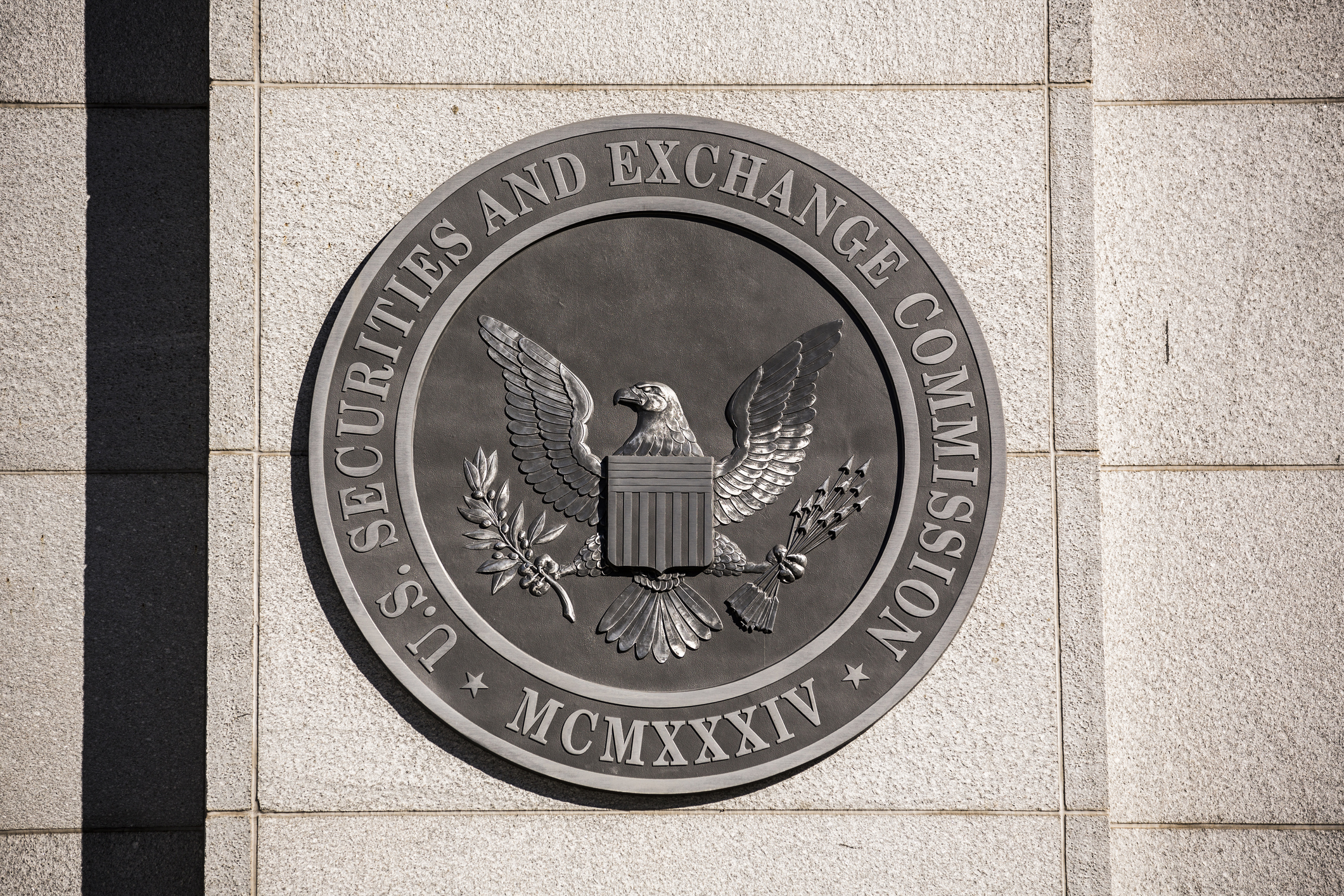 The SEC Is Concerned for Older Investors and Retirement Savers. Here's What You Should Know
The SEC Is Concerned for Older Investors and Retirement Savers. Here's What You Should KnowThe SEC focusing on older investors, retirement and college savers, and private securities. Here's how those changes impact you.
-
 Vesting, Catch-Ups and Roths: The 401(k) Knowledge Quiz
Vesting, Catch-Ups and Roths: The 401(k) Knowledge QuizQuiz Test your understanding of key 401(k) concepts with our quick quiz.
-
 How to Protect Yourself and Others From a Troubled Adult Child: A Lesson from Real Life
How to Protect Yourself and Others From a Troubled Adult Child: A Lesson from Real LifeThis case of a violent adult son whose parents are in denial is an example of the extreme risks some parents face if they neglect essential safety precautions.
-
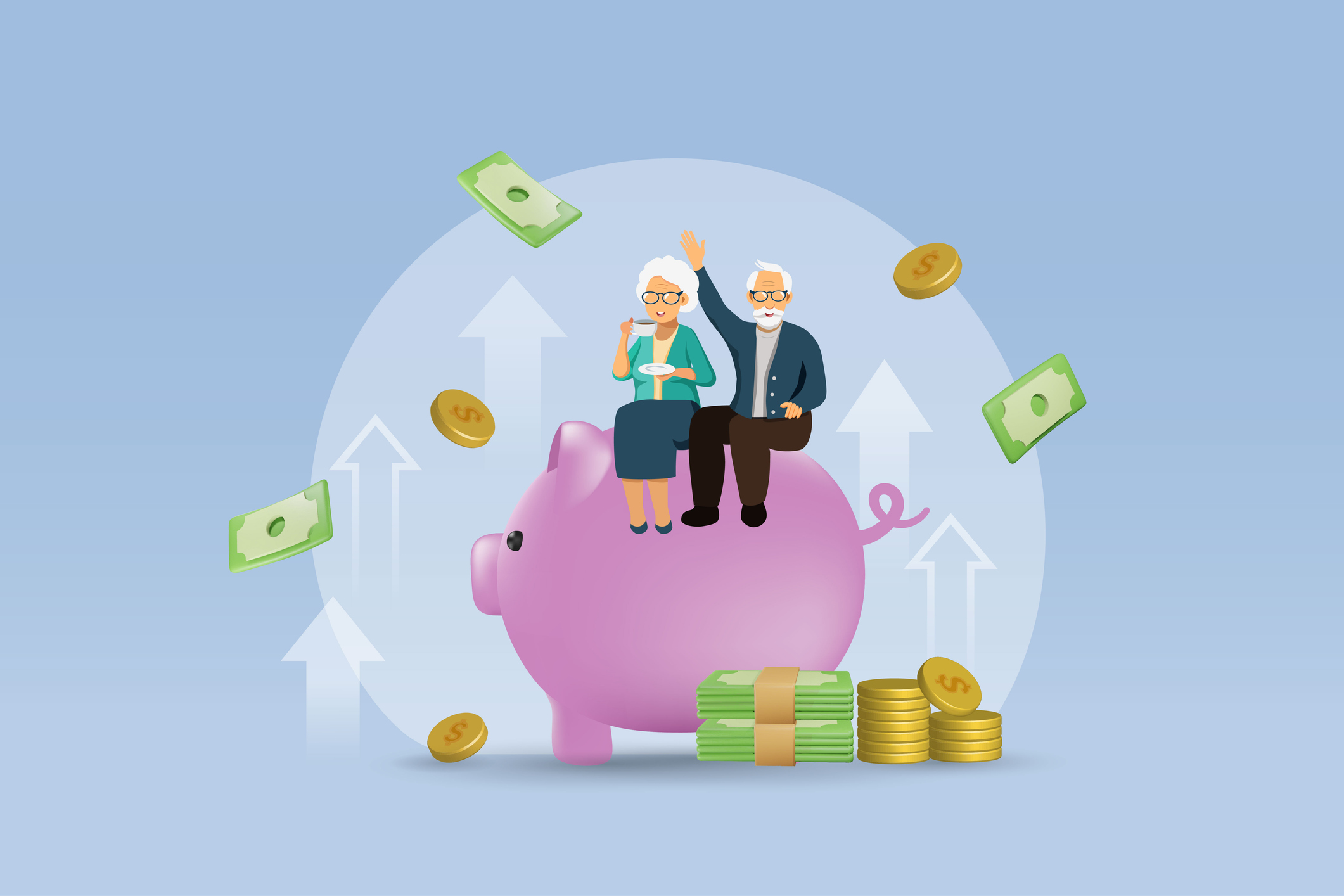 Here's How Much You Can Earn with a $100,000 Jumbo CD
Here's How Much You Can Earn with a $100,000 Jumbo CDYou might be surprised at how fast a jumbo CD helps you reach your goals.
-
 A Financial Planner Takes a Deep Dive Into How Charitable Trusts Benefit You and Your Favorite Charities
A Financial Planner Takes a Deep Dive Into How Charitable Trusts Benefit You and Your Favorite CharitiesThese dual-purpose tools let affluent families combine philanthropic goals with advanced tax planning to generate income, reduce estate taxes and preserve wealth.
-
 How Financial Advisers Can Best Help Widowed and Divorced Women
How Financial Advisers Can Best Help Widowed and Divorced WomenApproaching conversations with empathy and compassion is key to helping them find clarity and confidence and take control of their financial futures.
-
 Your Guide to Buying Art Online
Your Guide to Buying Art OnlineFrom virtual galleries to social media platforms, the internet offers plenty of places to shop for paintings, sculptures and other artwork without breaking the bank.
-
 I'm 59 With $1.7 Million Saved and Just Lost My Job. Should I Retire at 59½, or Find New Work?
I'm 59 With $1.7 Million Saved and Just Lost My Job. Should I Retire at 59½, or Find New Work?We asked professional wealth planners for advice.
-
 Metro by T-Mobile Is Giving Away This Samsung Galaxy A16: Which Plans Are Eligible?
Metro by T-Mobile Is Giving Away This Samsung Galaxy A16: Which Plans Are Eligible?Metro by T-Mobile is offering free Samsung Galaxy A16 phones on eligible plans right now. Here’s how the deal works.
-
 I Drive and Collect Classic Cars: Here’s How I Got in the Game Without Spending a Fortune
I Drive and Collect Classic Cars: Here’s How I Got in the Game Without Spending a FortuneAre classic cars a hobby or an investment strategy — or both? Either way, the vintage car scene is much cooler and more affordable than you think.
